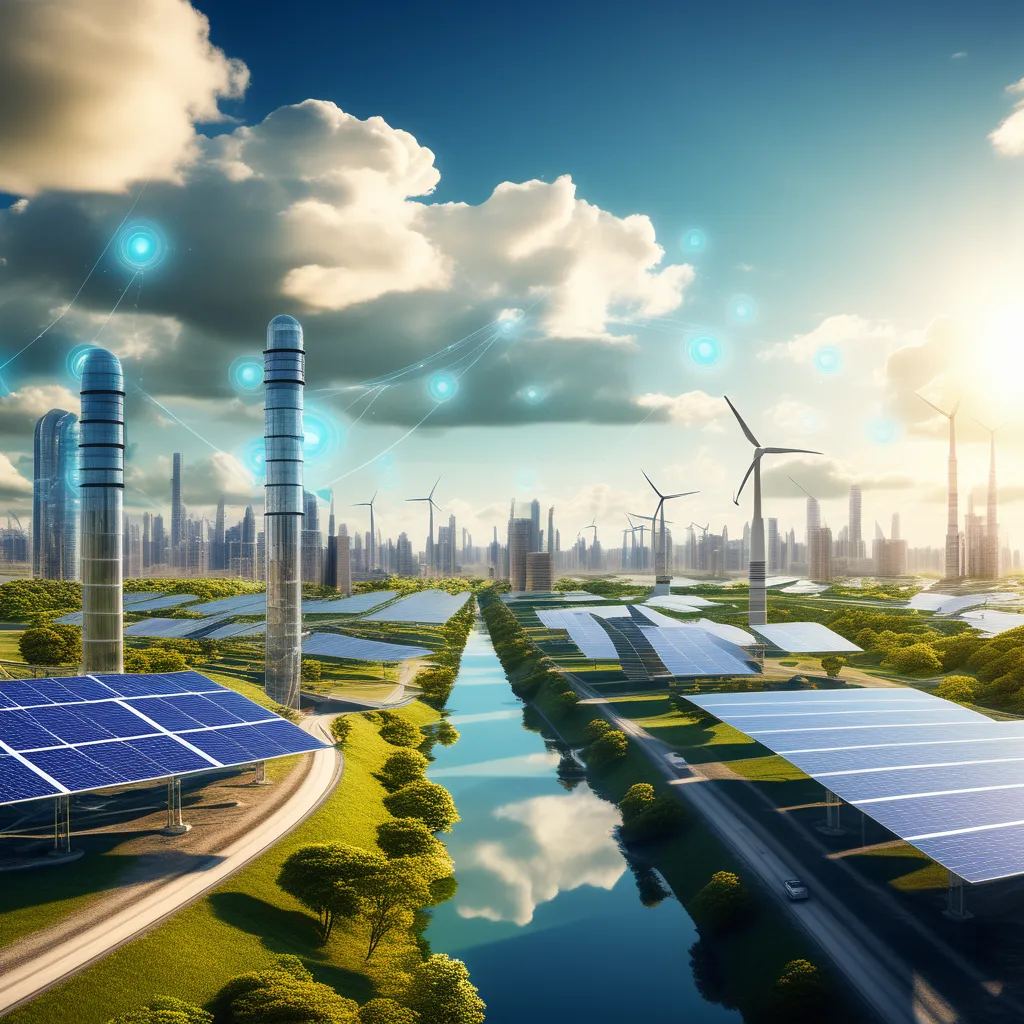The Future of Energy: Innovations and Trends
As I watched the world evolve around me, one thing became crystal clear: the way we generate and consume energy is changing at an astonishing pace. It's a topic that's close to my heart, and I can't help but marvel at the innovations and trends shaping the future of energy.

The Rise of Renewable Energy
I remember when solar panels were a rare sight. Today, they adorn rooftops in my neighborhood, silently converting sunlight into clean electricity.
Solar and Wind Power
Renewable energy sources like solar and wind power have become mainstream. Their increasing affordability and environmental benefits make them a driving force in the transition to a greener energy landscape.
The Energy Storage Revolution
A blackout once left me fumbling in the dark. Now, energy storage solutions like lithium-ion batteries are becoming household staples, providing backup power and grid stability.
Battery Breakthroughs
Advancements in energy storage technology are making renewables more reliable. Batteries can store excess energy for use when the sun isn't shining or the wind isn't blowing, reducing our reliance on fossil fuels.
Electric Vehicles (EVs)
I couldn't believe the difference when I test-drove an electric car. The silence, the instant torque—it was a revelation.
Driving Change
The electric vehicle revolution is in full swing. With more automakers offering affordable EV options, the transportation sector is becoming cleaner and quieter.
The Smart Grid
Once, power grids were a one-way street. Now, they're getting smarter, optimizing energy distribution and reducing waste.
Grid Modernization
Smart grids use data and automation to manage electricity more efficiently. They can detect and respond to outages, integrate renewables seamlessly, and empower consumers to monitor and control their energy usage.
Hydrogen's Potential
I read about hydrogen-powered trains in Europe and thought, 'Why not everywhere?' It turns out, hydrogen has enormous potential as a clean energy carrier.
Hydrogen as Fuel
Hydrogen is emerging as a versatile energy carrier, particularly for heavy industries and long-haul transportation. When produced using renewable energy, it emits no greenhouse gases.
Energy Efficiency
I've always been conscious of turning off lights, but energy efficiency goes beyond that. It's about designing buildings, appliances, and systems that use less energy without sacrificing comfort.
Efficiency Innovations
Innovations in energy-efficient technology are reducing energy waste across sectors. From LED lighting to smart thermostats, these innovations help us do more with less.
The Role of Policy
I've seen how government policies can drive change. Incentives, regulations, and emissions targets are shaping the energy landscape.
Policy and Incentives
Government policies play a crucial role in accelerating the transition to clean energy. Incentives for renewable projects and emissions reduction targets encourage businesses and individuals to make sustainable choices.
The Path Forward
As I reflect on these innovations and trends, I can't help but feel hopeful about the future of energy. The transition to cleaner, more sustainable sources is well underway, and technology continues to push boundaries.
But there's work to be done. Our choices as consumers, voters, and advocates will shape the future of energy. By supporting renewable energy, adopting energy-efficient practices, and advocating for policies that prioritize sustainability, we can accelerate the transition and leave a cleaner, brighter world for generations to come.
In the grand scheme of things, my journey alongside these energy innovations is just a small part of a global transformation. Yet, it reminds me that change is possible, and each of us has a role to play in securing a sustainable energy future.

No comments:
Post a Comment